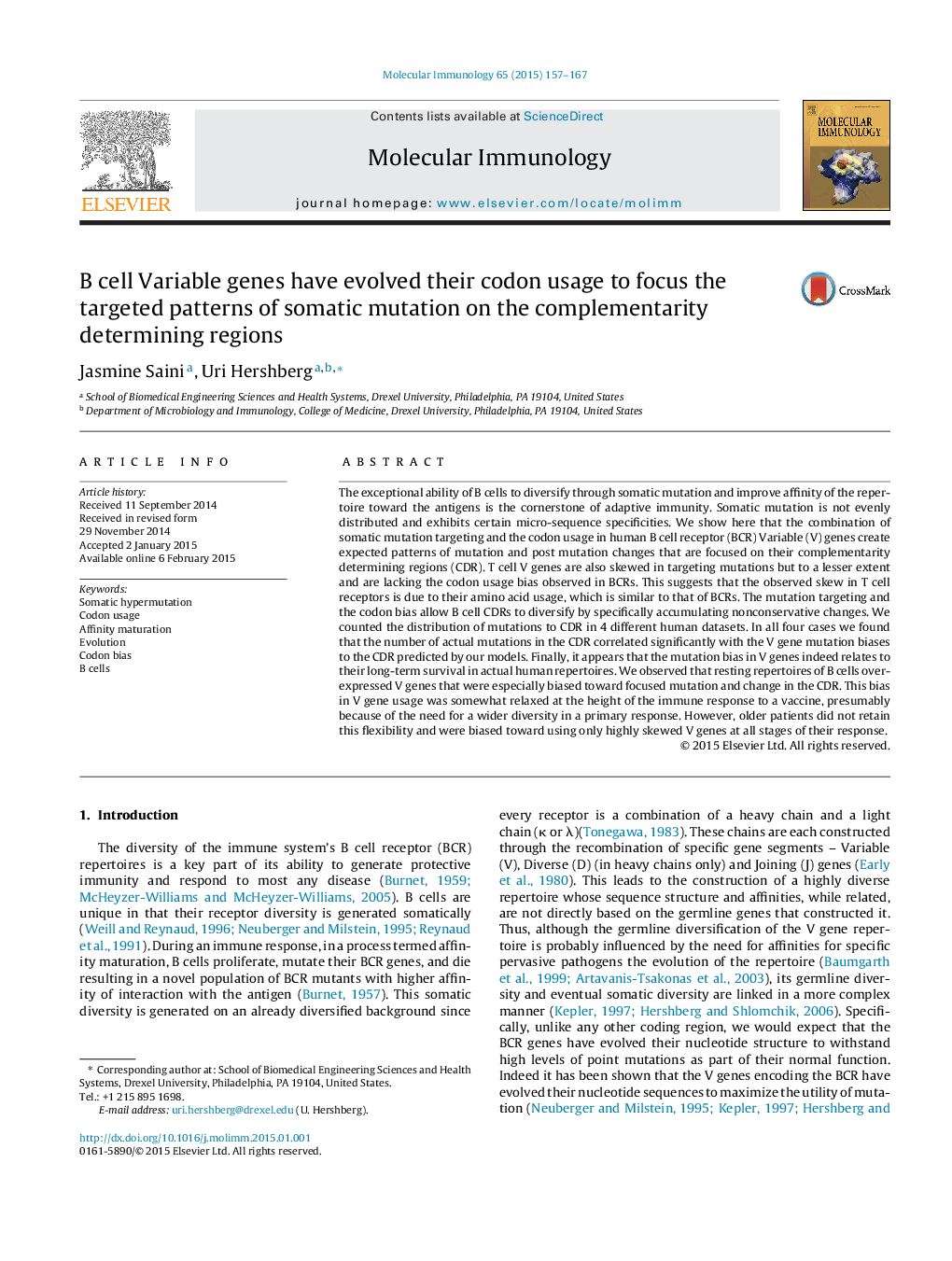| کد مقاله | کد نشریه | سال انتشار | مقاله انگلیسی | نسخه تمام متن |
|---|---|---|---|---|
| 2830637 | 1163747 | 2015 | 11 صفحه PDF | دانلود رایگان |

• Somatic mutation targeting and codon bias focus change on B cell V gene CDR.
• T cells show less bias towards targeting the CDR and lack codon bias.
• B cell repertoires skew V gene usage to have greater bias to change in the CDR.
The exceptional ability of B cells to diversify through somatic mutation and improve affinity of the repertoire toward the antigens is the cornerstone of adaptive immunity. Somatic mutation is not evenly distributed and exhibits certain micro-sequence specificities. We show here that the combination of somatic mutation targeting and the codon usage in human B cell receptor (BCR) Variable (V) genes create expected patterns of mutation and post mutation changes that are focused on their complementarity determining regions (CDR). T cell V genes are also skewed in targeting mutations but to a lesser extent and are lacking the codon usage bias observed in BCRs. This suggests that the observed skew in T cell receptors is due to their amino acid usage, which is similar to that of BCRs. The mutation targeting and the codon bias allow B cell CDRs to diversify by specifically accumulating nonconservative changes. We counted the distribution of mutations to CDR in 4 different human datasets. In all four cases we found that the number of actual mutations in the CDR correlated significantly with the V gene mutation biases to the CDR predicted by our models. Finally, it appears that the mutation bias in V genes indeed relates to their long-term survival in actual human repertoires. We observed that resting repertoires of B cells overexpressed V genes that were especially biased toward focused mutation and change in the CDR. This bias in V gene usage was somewhat relaxed at the height of the immune response to a vaccine, presumably because of the need for a wider diversity in a primary response. However, older patients did not retain this flexibility and were biased toward using only highly skewed V genes at all stages of their response.
Journal: Molecular Immunology - Volume 65, Issue 1, May 2015, Pages 157–167